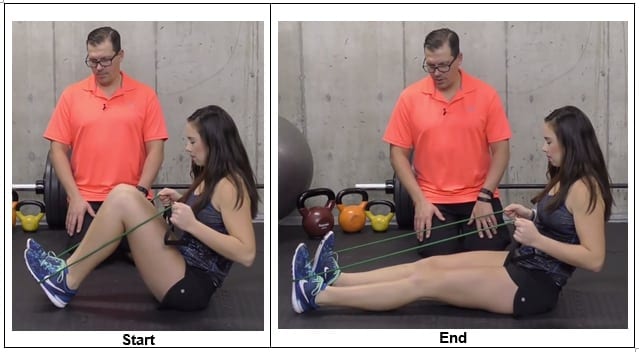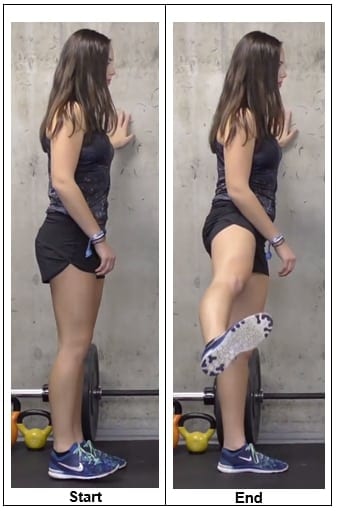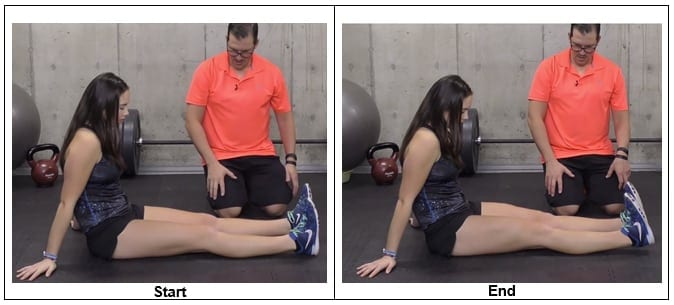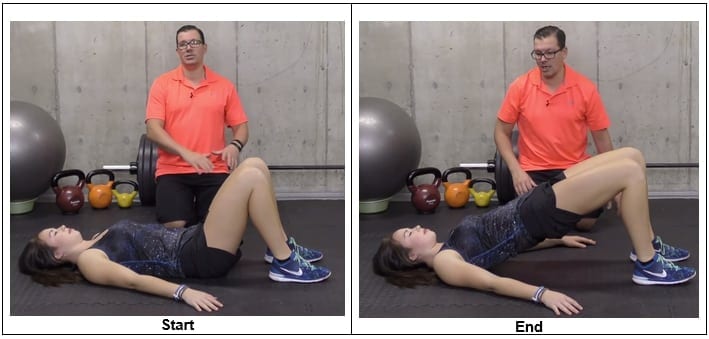Knee Strengthening Exercises For A Meniscus Tear !
A common knee injury is the meniscus tear. The meniscus is a rubbery, C-shaped disc that cushions your knee. The knee has two menisci, one on the outer edge of the knee and one on the inner edge. The menisci keeps your knees steady by balancing your weight. A torn meniscus can prevent your knee from working correctly.
A tear is usually caused by twisting or turning quickly. Meniscus tears can occur when you lift something heavy or play sports. Unfortunately the older you get, your meniscus gets worn. This can make it tear easily.
There are three types of meniscus tears:
- Minor tear, you may have slight pain and swelling. This usually goes in 2 or 3 weeks.
- Moderate tears can cause pain at the side or centre of your knee. Swelling gets worse over 2 or 3 days. This may make your knee feel stiff and limit how bending your knee, but walking is usually possible. You might feel a sharp pain when you twist your knee or squat. These symptoms may go away in 1 or 2 weeks but can come back if you twist or overuse your knee. The pain may come and go for years if the tear isn’t treated.
- Severe tears are where pieces of the torn meniscus can move into the joint space. This can make your knee catch, pop or lock. You may not be able to straighten it. Your knee may feel “wobbly” or give way without warning. It may swell and become stiff right after the injury or within 2 or 3 days.

So here are some exercises to help recovery and prevention:
1. Flexion Extension
- Begin in an upright standing position and put your one hand up against the wall.
- Place your weight onto one leg.
- Swing the other leg forward and backward.
- Repeat the movement.

Start off with 1 set of 5 reps on each direction. Perform this exercise in a smooth controlled movement with a good contraction at the end of each of the movement. This exercise targets the hips and the isolation contraction of the muscles around the knee.
The purpose of this exercise is:
- When you stand on one leg, you isometrically work on the muscles around the knee and in the hip.
- When you swing the leg of the injured knee, you work on the muscles around the hip.
When you have a knee injury, it is very important to make sure that you have a strong hip to help you recover from the meniscus tear and subside pain and prevent a future injury.

2. Heel Slides With Band
- Begin in an upright sitting position.
- Bend your knees, step both legs into the tubing below the arches of your feet and grab the handles.
- Straighten your legs out front, then bring them back to the start position.
- Repeat the movement.
If doing this exercise with both legs is too challenging for you, you can do it with one leg at a time.
 Start off with 1 set of 5 reps, then you can progress to 10 repetitions. Perform this exercise in a smooth controlled movement with a good contraction at the end position, specifically the muscles around the knees. This exercise mainly works on the activation, endurance and strength of the muscles around the knees.
Start off with 1 set of 5 reps, then you can progress to 10 repetitions. Perform this exercise in a smooth controlled movement with a good contraction at the end position, specifically the muscles around the knees. This exercise mainly works on the activation, endurance and strength of the muscles around the knees.
The purpose of this exercise is:
- Work on the range of motion of the knee for flexion extension.
- Work on the activation, endurance and strength of the muscles around the knees and to utilise the restive tubing to increase the challenge of the exercise.

3. Hip Abduction
- Begin in a nice and upright standing position.
- Put one hand against the wall to help with balance so you can focus on the isolation of the exercise and work on the muscles that you need to exercise.
- Place your weight onto one leg, lift the other leg out to the side for about 30-45 degree.
- Bring your leg back down.
- Repeat the movement.

Hip Abduction
Start off with 1 set of 5 reps on each side. Perform this exercise in smooth controlled movement with a good contraction at the end position.
The purpose of this exercise is:
- First is to strengthen out the outer part of the hip.
- When you bring the leg out to the side, if that’s the injured knee, then it strengthens out the outer part of the hip.
- A strong hip is important to prevent knee pain and recover knee injury.
- The second benefit or purpose of this exercise is if the injured leg is the one you used to stand on, it isometrically contract the muscles around the knees and hips.
- The injured leg will work the whole time and target the important muscles, which are helpful for the meniscus tear recovery.

4. Static Quad Contraction
- Begin in an upright sitting position and put your hands to the side.
- Contract your quads, tighten the quad muscle, hold it for a second.
- Relax and repeat the movement.
- Contraction of the quad will straighten out the leg more and press the end range extension.

Static Quad Contraction
Start off with 1 set of 5 reps. Perform this exercise in a nice and smooth contraction at the end of the movement for a hold of a second. This exercise works on the activation, endurance and strength of the quadriceps.
The purpose of this exercise is to:
- Train the activation, endurance, and strength of the quadriceps muscles which might not be working properly after the meniscus tear.

5. Glute Bridge
- Lie on your back on the floor and put your arms to the side.
- Relax the upper body.
- Bend your knees and feet are hip width apart.
- Push through the heels and bring your hips up.
- Maintain a good alignment with the knees, hips and shoulders.
- Bring the hips back down and repeat the movement.

Glute Bridge
Start off with 1 set of 5 reps then you can progress to 10 repetitions. Perform this exercise in smooth controlled movement with a good contraction of the glutes and hamstrings.
The purpose of this exercise is to:
- Work on the muscles around the hips, specifically the glutes and hamstrings to help with the recovery and prevention of a future injury.



